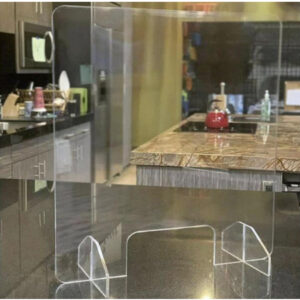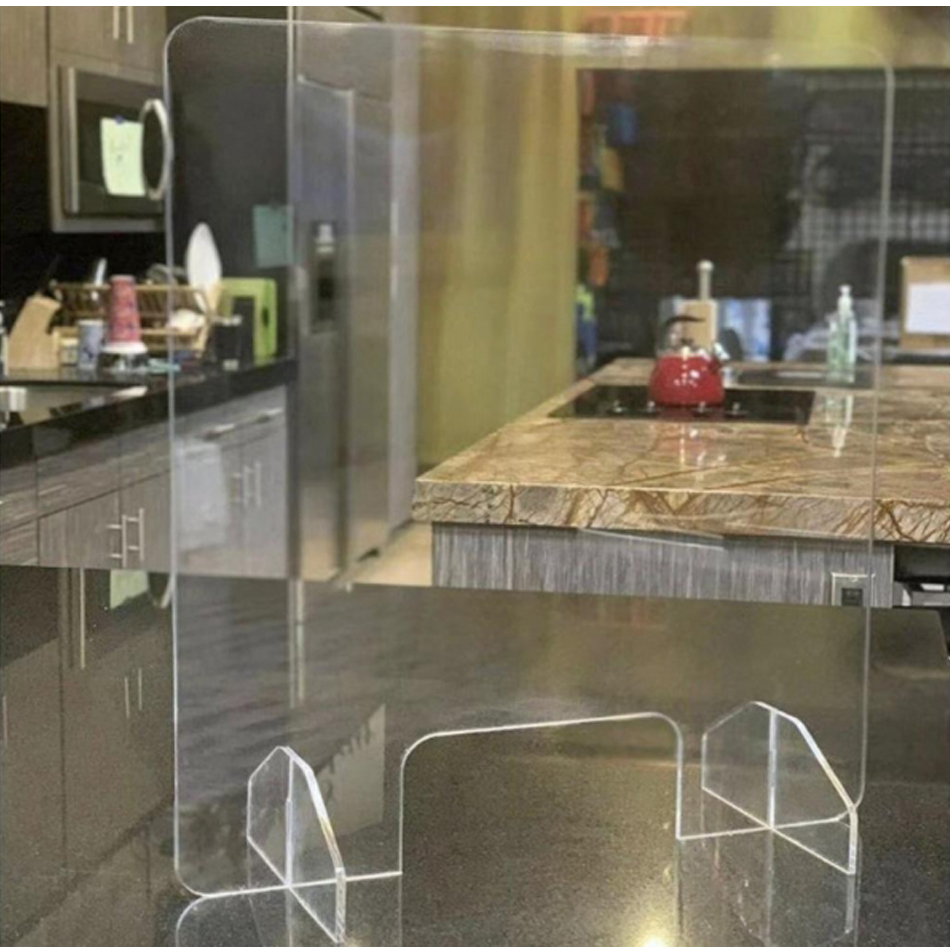 Even before COVID-19, plastic sneeze guards were an essential protective fixture in a large variety of business settings from restaurants and delis to butcher shops and many more. In an effort to comply with COVID-19 restrictions and guidelines, many businesses that didn’t traditionally use sneeze guards have installed them to protect their customers and employees. Sneeze guards are now being widely used at checkout counters in grocery stores, salons and spas, convenience stores, and many more places. But without following proper cleaning and sanitation techniques, sneeze guards are essentially useless. To maximize their effectiveness, it’s important to work with a reputable sneeze guard supplier and plexiglass distributor in Toronto and ensure that they’re being sanitized regularly.
Even before COVID-19, plastic sneeze guards were an essential protective fixture in a large variety of business settings from restaurants and delis to butcher shops and many more. In an effort to comply with COVID-19 restrictions and guidelines, many businesses that didn’t traditionally use sneeze guards have installed them to protect their customers and employees. Sneeze guards are now being widely used at checkout counters in grocery stores, salons and spas, convenience stores, and many more places. But without following proper cleaning and sanitation techniques, sneeze guards are essentially useless. To maximize their effectiveness, it’s important to work with a reputable sneeze guard supplier and plexiglass distributor in Toronto and ensure that they’re being sanitized regularly.
How to Properly Maintain and Sanitize Your Sneeze Guards
By now, pretty much anyone who works in a customer-facing job should be accustomed to working with and around sneeze guards as a protective barrier. An important part of sneeze guard maintenance is knowing how to properly sanitize them. Sanitation techniques should be employed on a scheduled timeline to ensure any viruses living on their surfaces are fully eliminated.
Here’s how you can maintain and sanitize your sneeze guards without inadvertently damaging them.
Clean Sneeze Guards before Disinfecting Them
Sanitation and cleaning aren’t the same thing. Cleaning entails removing all visible dirt, crumbs, and markings from a surface. Sanitation involves actually applying a strong chemical agent that will kill any invisible viruses or bacteria living on the surface. In order for the sanitation process to be completely effective, the chemical agent must be applied to a clean surface.
Polish the Clear Plastic
No sneeze guard cleaning and sanitization process is complete without polishing the clear plastic. Sometimes, using microfiber cloths and bleach water or isopropyl alcohol to sanitize the plastic can leave behind an unpleasant cloudy film. To get rid of this cloudy film, you can use a specially formulated plastic cleaner or polish and achieve a smooth, fresh, and clean look.
Wipe with a Microfiber Cloth
Clear acrylic is highly sensitive and prone to scratching, which is why it’s important to use a soft microfiber cloth when wiping down a plastic sneeze guard surface. Microfiber is known to be anti-bacterial and incredibly soft so you can easily disinfect the surface without scratching it. Microfiber cloths are also eco-friendly and cost-proficient as they’re machine washable and reusable, which means you won’t have to replace them often.
Clean and Disinfect the Surrounding Surfaces As Well
Unfortunately, it’s not always enough to simply wipe down and disinfect the plastic surfaces on plexiglass or acrylic sneeze guards. The surrounding areas need to also be thoroughly cleaned and sanitized to fully eradicate any potential viruses or bacteria that are living on those surfaces as well. This is the most effective way to stop the spread of COVID-19 and ensure everyone’s health and safety in public places.
When Is It Time to Replace Your Sneeze Guards?
Sneeze guards are designed to last a long time. Unfortunately, nothing lasts forever and eventually, you will have to replace your existing sneeze guards. When you start seeing visible signs of wear and tear or that the sneeze guard is falling apart, that’s usually when you know it’s time to replace it with a new one.
Plexiglass and Sneeze Guard Suppliers in the GTA
When the time comes to replace your sneeze guards, Canada Plastics & Belting Inc. will be there for you. For over 20 years, we’ve been one of the leading plexiglass distributors and freestanding sneeze guard barrier suppliers in Canada. Contact us today for more tips on sanitizing and maintaining your sneeze guards!

